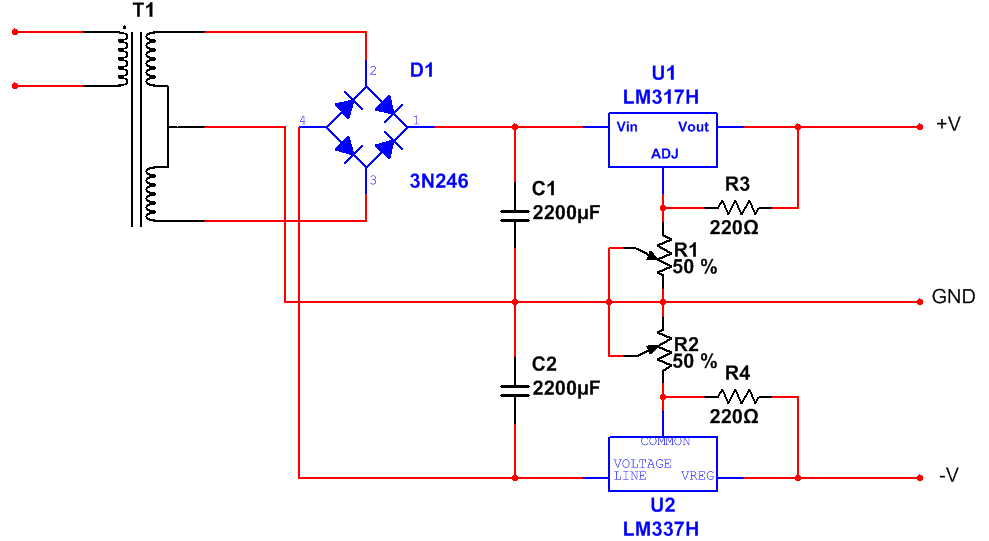I'm making an Adjustable Dual Power Supply with +V, GND and -V DC output. This is my circuit:

I've used a Center tapped transformer that 18-0-18V output and with 2A rating. I'm using a Full Bridge rectifier with a Capacitor filter. I'm using LM317 for +V regulation and LM317 for -V regulation. Both the voltages can be adjusted with respect to ground using the 10K potentiometers R1 and R2.
Problems:
1. Voltage across each Capacitor shows around 30V
2. No problems while adjusting +V. But, excessive current flows through -V. For example, at 20V +V, the current through R1 is 20mA, whereas, at 20V -V, the current through R2 is 50mA. Current distribution is uneven across regulators LM317 and LM337. But regulator temperatures are normal, not too hot
3. When -V is decreased below 15V, the R2 potentiometer burns and the current through it is about 120mA
4. The output is not completely regulated. Even if I adjust a fixed voltage, the output voltage slowly starts decreasing. Like, I adjusted +5V and after around 10 mins, it was +4.45V. I even checked the input voltage across LM317 and it was constant.
I've used a Center tapped transformer that 18-0-18V output and with 2A rating. I'm using a Full Bridge rectifier with a Capacitor filter. I'm using LM317 for +V regulation and LM317 for -V regulation. Both the voltages can be adjusted with respect to ground using the 10K potentiometers R1 and R2.
Problems:
1. Voltage across each Capacitor shows around 30V
2. No problems while adjusting +V. But, excessive current flows through -V. For example, at 20V +V, the current through R1 is 20mA, whereas, at 20V -V, the current through R2 is 50mA. Current distribution is uneven across regulators LM317 and LM337. But regulator temperatures are normal, not too hot
3. When -V is decreased below 15V, the R2 potentiometer burns and the current through it is about 120mA
4. The output is not completely regulated. Even if I adjust a fixed voltage, the output voltage slowly starts decreasing. Like, I adjusted +5V and after around 10 mins, it was +4.45V. I even checked the input voltage across LM317 and it was constant.






